We use cookies to make your experience better. To comply with the new e-Privacy directive, we need to ask for your consent to set the cookies. Learn more.
A check list for taking your car to the track
If you are taking your car to the track, one of the best things that you can do to ensure that you have a good day is to make sure that you bring everything that you might need with you. That way you don't have a small failure, or something like dehydration ruin your day.
Here is the list that we have put together that you can use as a rough guide:
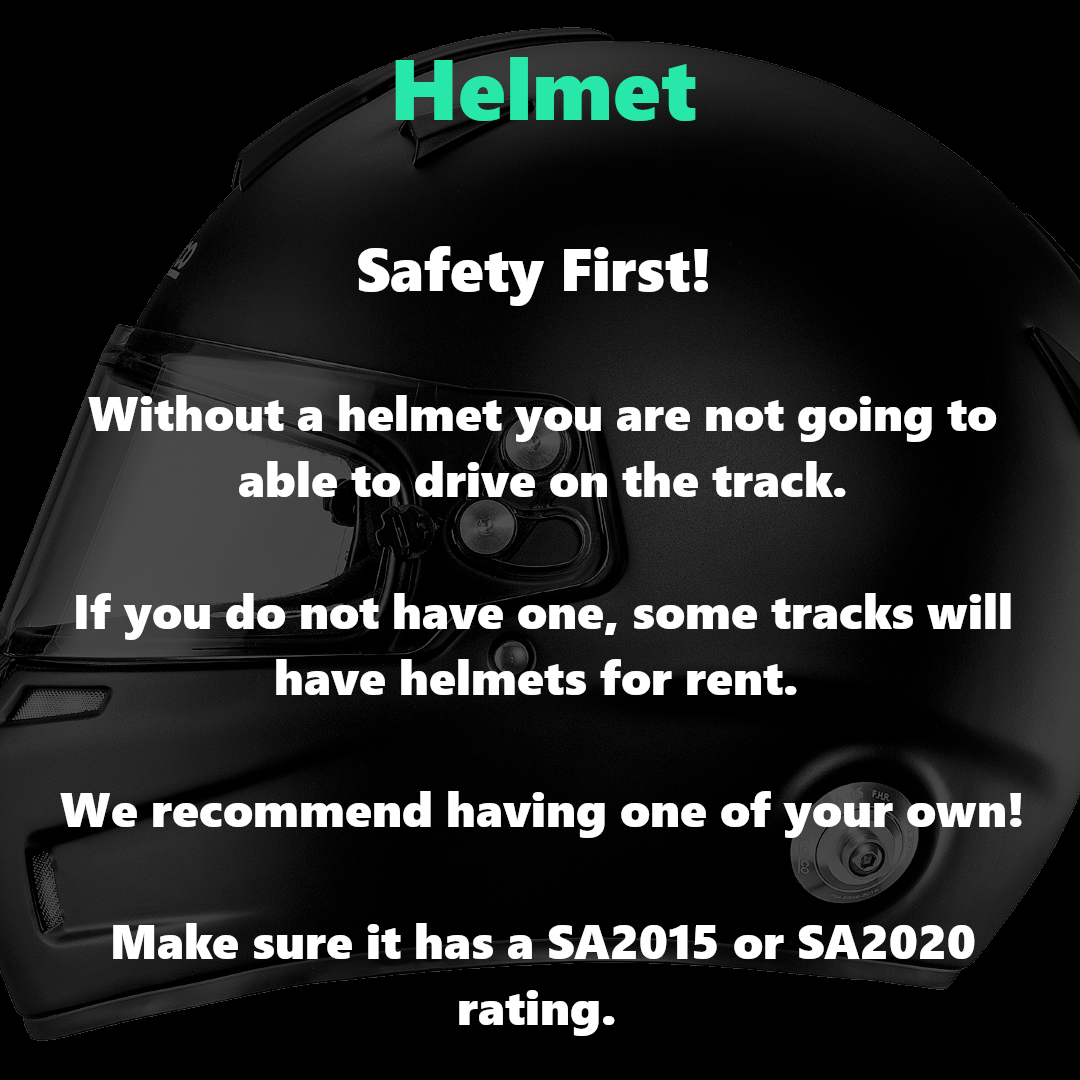
If you are driving at the track, you are going to need a helmet at a minimum. And you need to make sure that the helmet you bring meets the standard that the track or track day organizer requires. If you have any question at all about what they require, make sure you contact them a few days before your event.
As a general guide for most track days, either a motorcycle or Automotive helmet will work, it just has to be a 3/4 of full faced helmet. For the rating, the safety standard cannot be older than 10 years. Most of the ratings are up-dated every 5 years, so starting in 2020, the oldest rating that would be allowed on track would be an SA2015 rated helmet.
The other thing to consider is that you really can't ever have too much safety equipment. If you are going to the track often, a drivers suit might not be a bad idea, and if you are getting well into triple digit speeds, harnesses and a neck restraint like a HANS device wouldn't be a bad idea either.
Keep in mind that most tracks now have an equal protection rule. So if you put in a 6-Point harness (only 5 or 6 point harnesses are allowed at most tracks. 4-point harnesses are largely not considered safe anymore), and you want to be able to take a passenger on track, the passenger seat needs to have a 6-point harness installed as well.
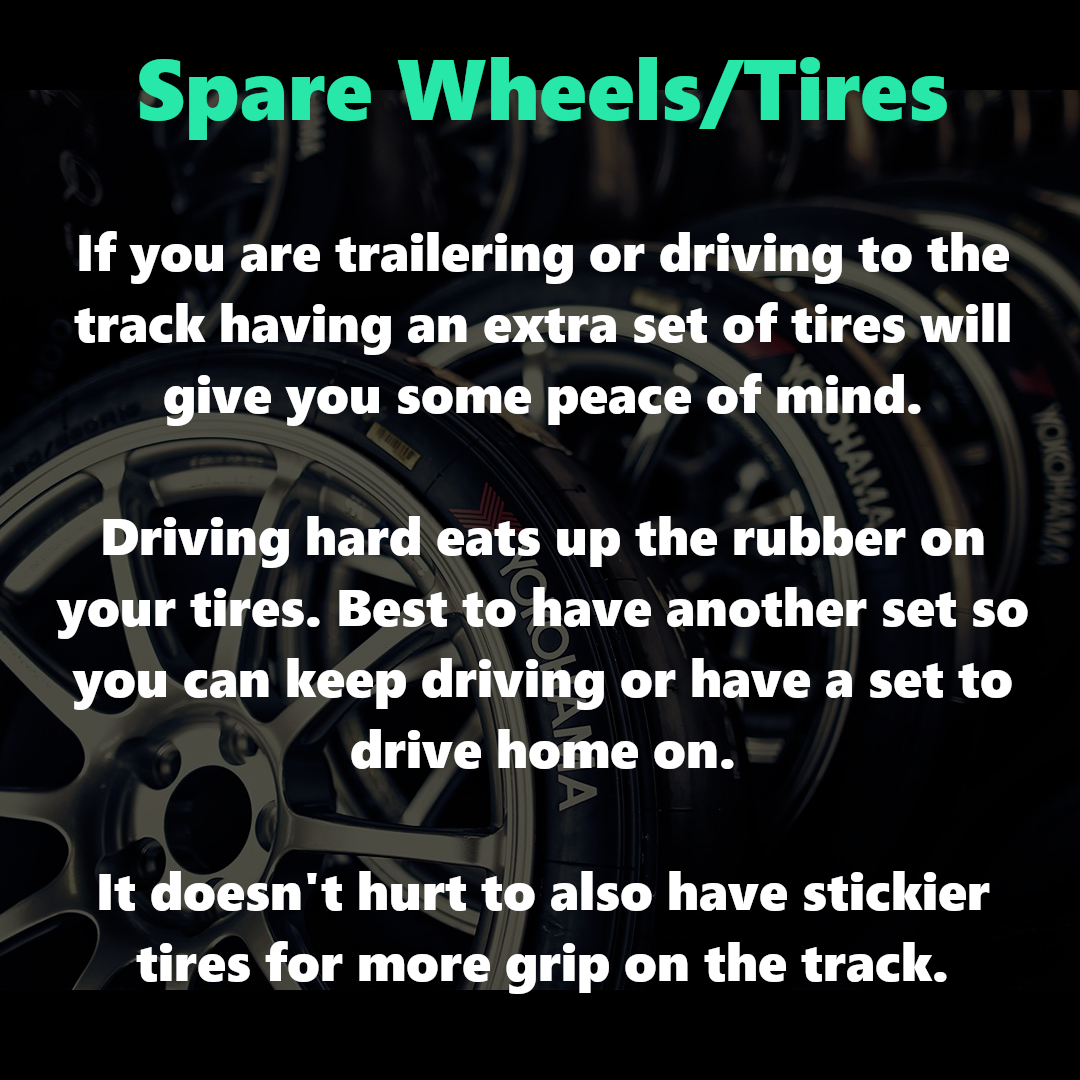
As you drive at the track, you are going to be using your tires more than you most likely ever would when driving on the street. And for that reason, it is good to plan for tire wear. At a minimum, you will want to rotate your tires at least once per track day (maybe more). But if possible, the ideal situation would be that you drive to the track on street tires, and then put on your track wheels and tires there. This way, if you do have a wear issue with your track tires, you can still drive home. And if you are running R-Compound tires and especially slicks with minimal if any tread, they can potentially be dangerous to drive on the street if you encounter rain or water.
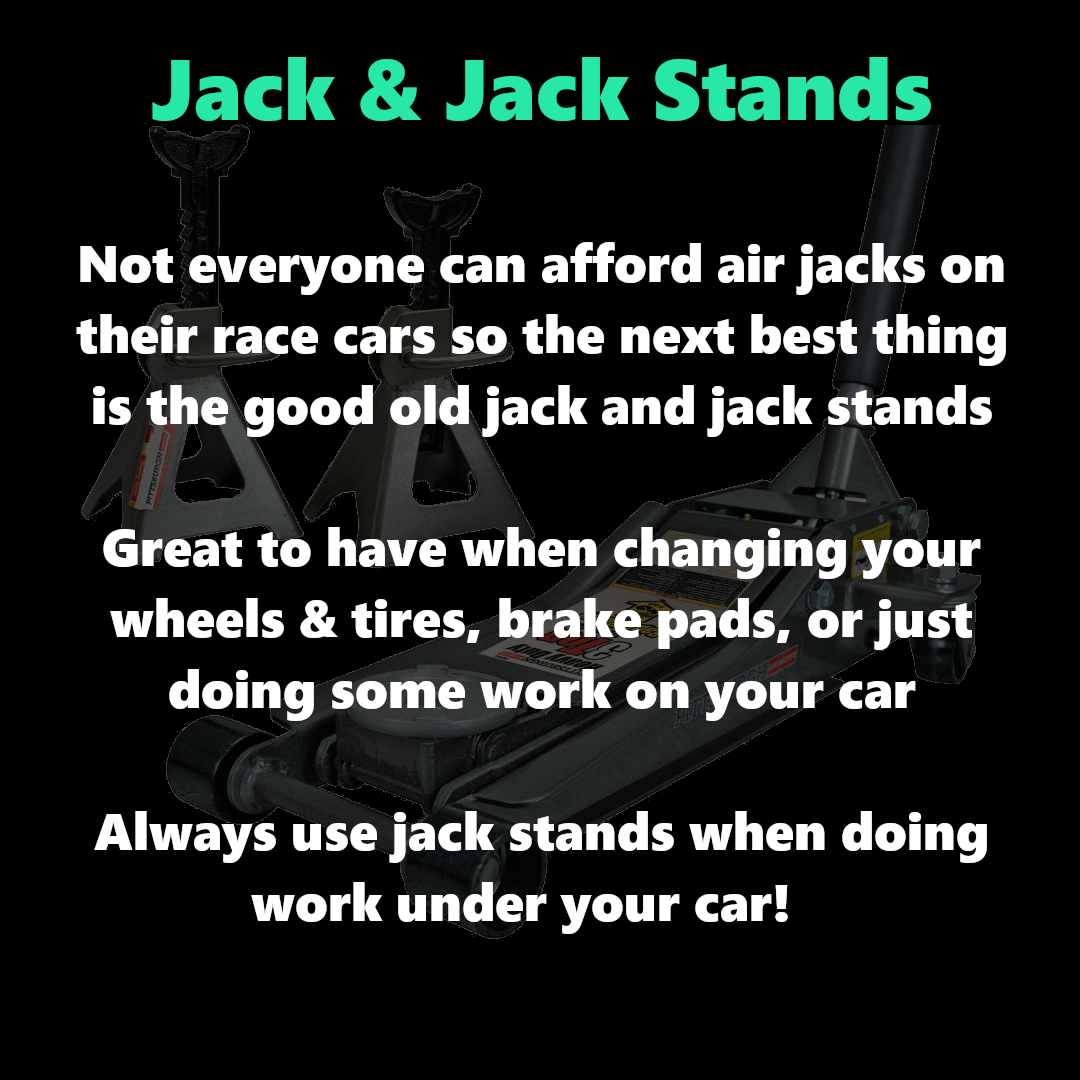
If you are going to be able to swap out wheels and tires easily, and if you want the ability to get your car up in the air to check for issues or make repairs, you will need a jack and jack stands. There are some small hydraulic jacks that are ideal for this as they won't take too much room up in the car, but still give you a good deal of lift. Scissor jacks are not ideal in the least for this purpose. And if you can, bring 4 jack stands so you have the ability to get the entire car up in the air if needed.
And make sure that you have a couple of wheel chalks as well so that you can safely jack the car up.
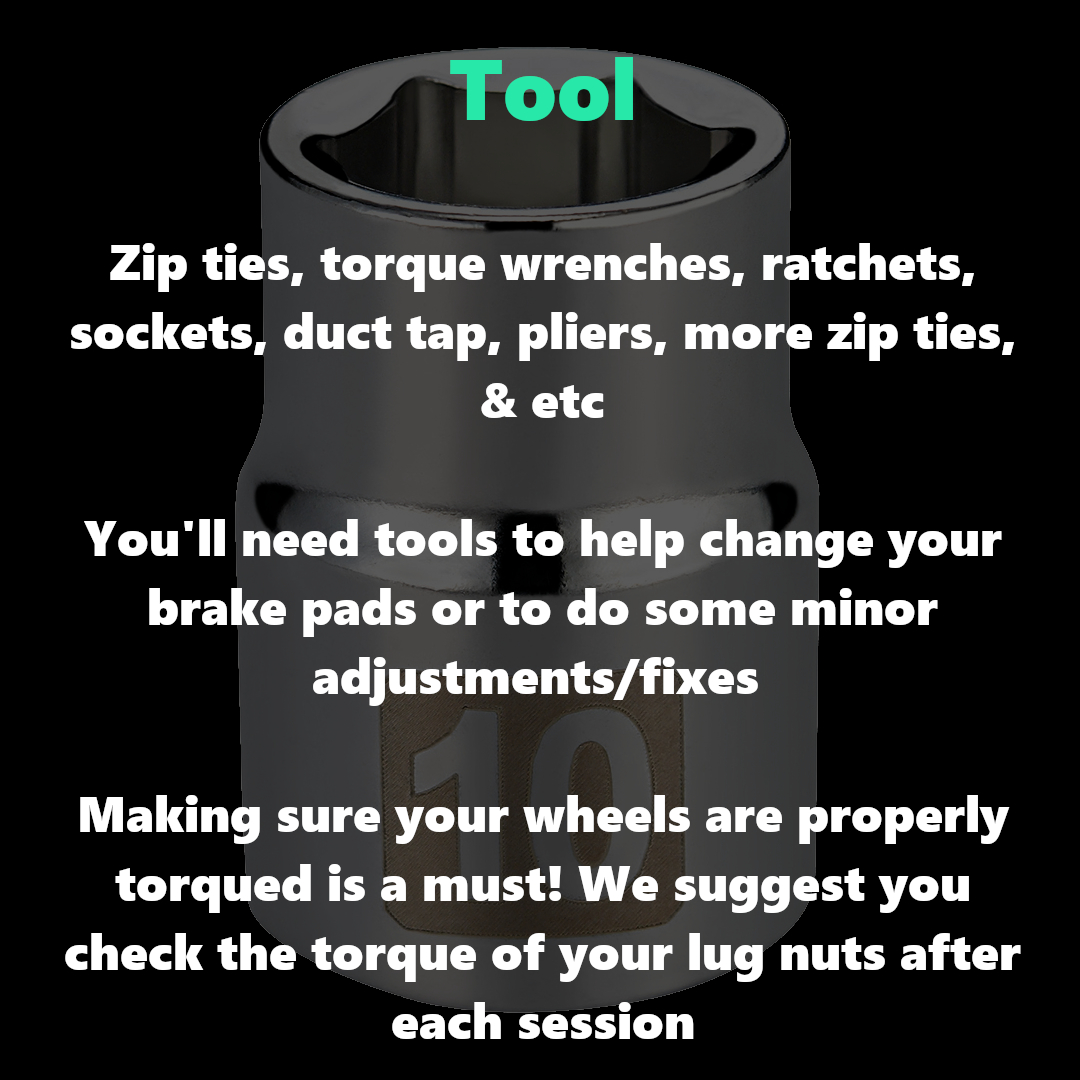
When it comes to tools, you can never bring too many. Having a set of the standard sized wrenches and sockets that you use on your car is a must. And any tool that you think might come in handy should ideally go with you to the track. Bring anything that you might need for wheels, brakes, suspension, and light to moderate engine work. A torque wrench for your wheels is also a must.
And remember, you can never have too many zip-ties or too much duct-tape at the track.
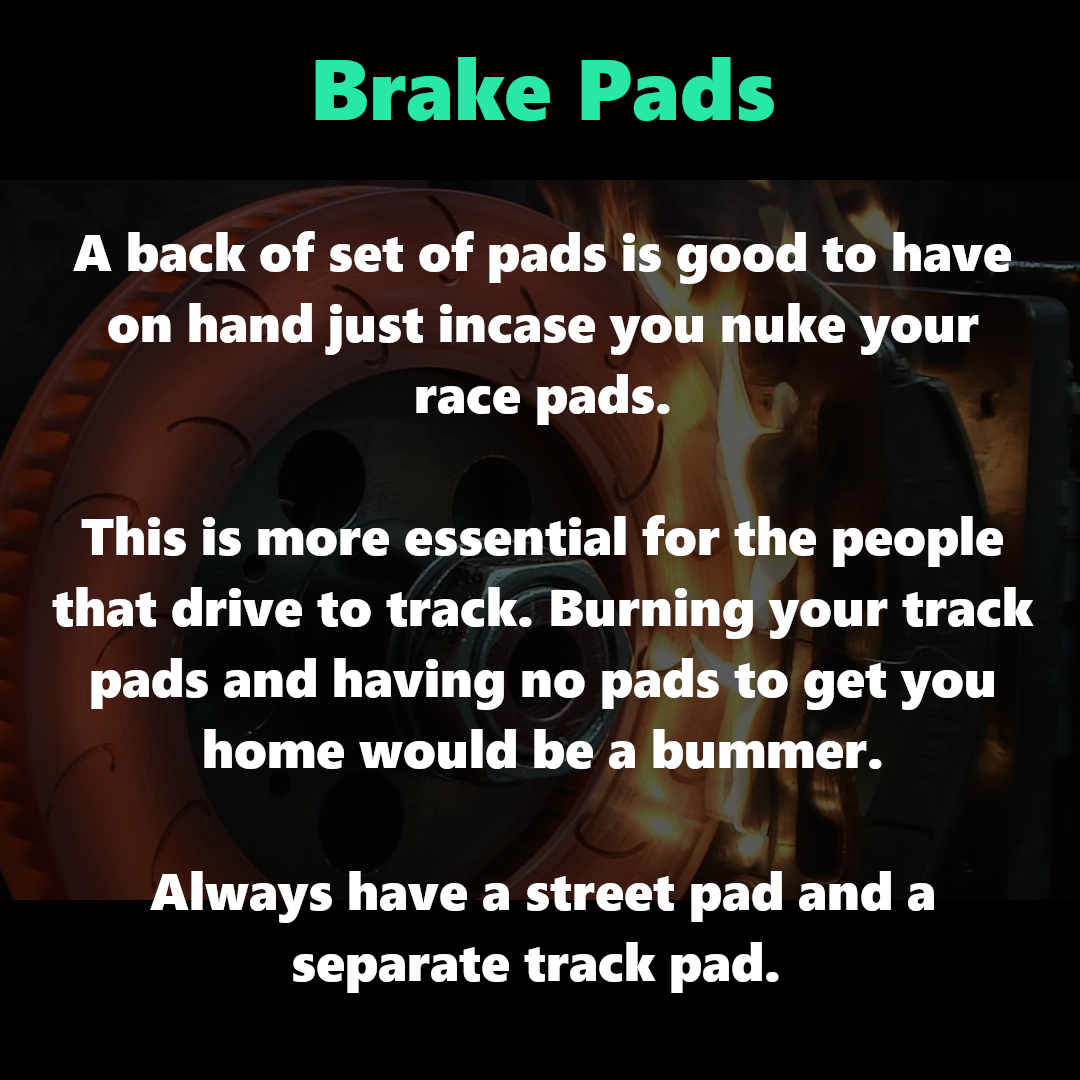
If you are going to the track with any frequency, most likely you have a set of track pads that you put in shortly before your track day. The best practice is always to bed in your set of track pads before you go on track. But it is also a good idea to bring a spare set of pads with you too. The more aggressive the track pad, the shorter its overall life generally, and a track pad will get about 3/4 of its use in the first half of its pad material. That second half of pad material typically gets used more quickly than the first because there is less pad material to handle heat load, and because it has been heat cycled a number of times by that point.
So having a spare set of pads (especially fronts) so you can swap out pads if you need them in order to make it home is always a good idea.
It is also worth mentioning here that having enough brake fluid to bleed your brakes, and a vacuum pump to help with that process are never a bad idea to have as well.
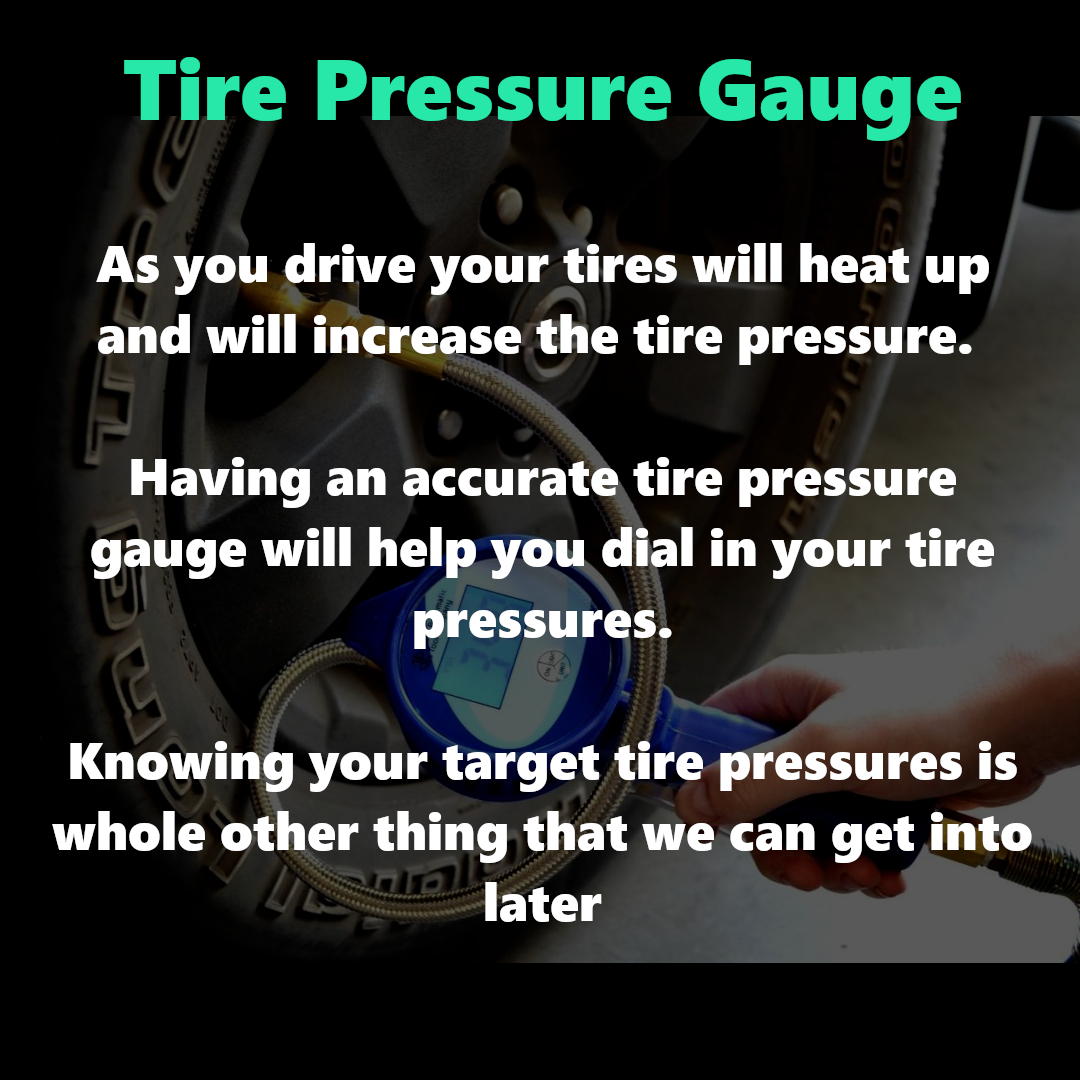
At the track, this may be the most important tool to have next to a torque wrench and wheel socket. You will want to check your tire pressure before going on track, and when coming off track as well. Most tracks will have more turns in one direction and the out-side tire up front will typically get hotter than the rest. So you will want to monitor both hot and cold tire temps, and make sure that you aren't letting a tire get over-inflated on track when it warms up.
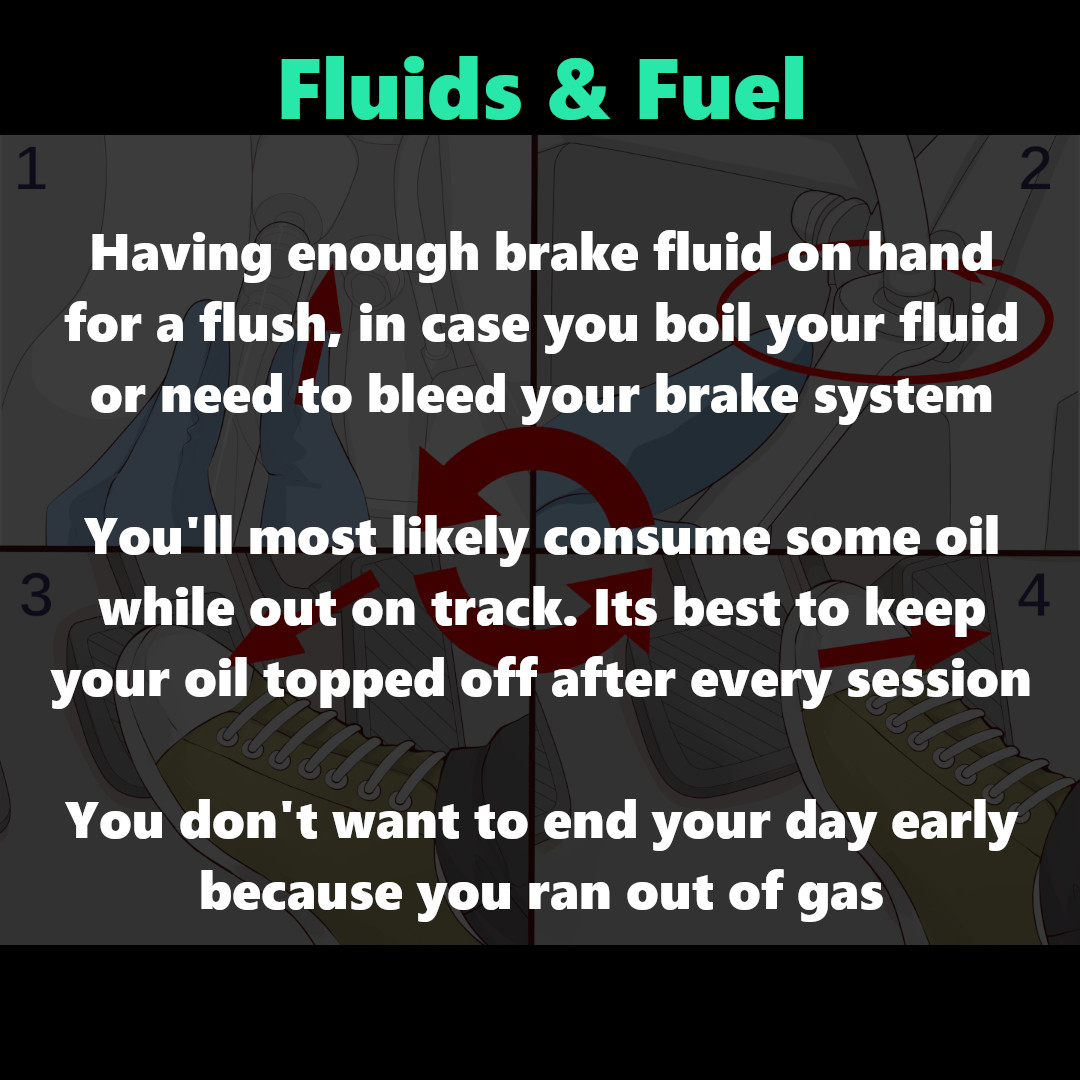
Having an extra quart or two of any critical fluid never hurts. Since you are driving your car hard at the track, it is entirely possible that you will see an increase fluid use on track. The most common thing here is engine oil. You will want to monitor all of your fluid levels through the day, and if anything starts to look low, you want to have the fluids on hand to top them up.
If you do find that you have started to leak any fluid while you were on track, you should only ever go back on track if you have fixed that leak. But if you also need to drive home, again, it helps if you have power steering fluid, etc., on hand so that you can make it if you can't fix your problem track-side.
Also, remember that your fuel consumption will go up on track as well. If you are using a fuel, like E85 for instance, that isn't available at the track, or at least a short drive away, you may want to bring an extra supply with you to the track.
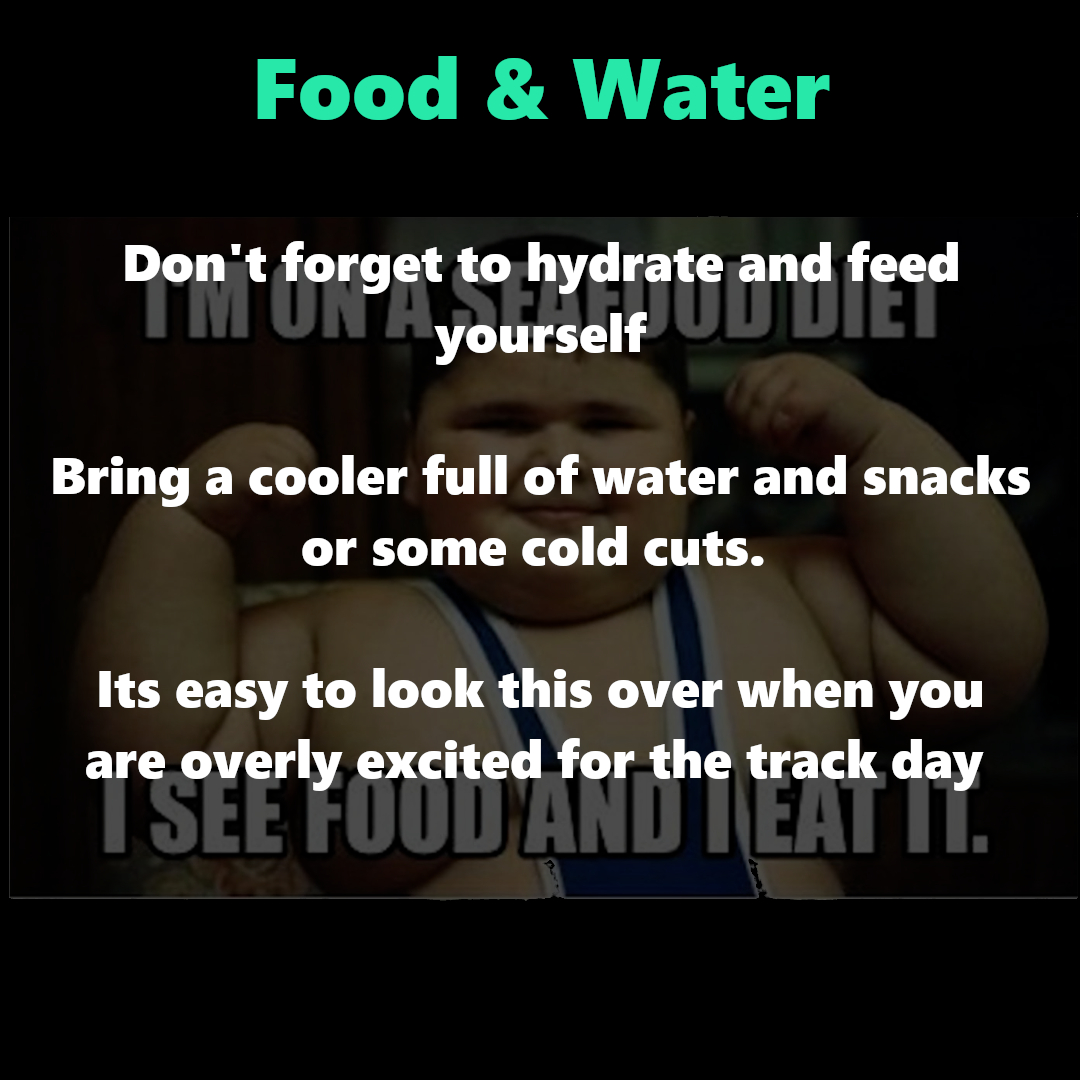
Up to this point, most of the list of things to bring has revolved around the car, but you, the driver, are just as important! Many times tracks are located outside of town, and they don't always have food and water available. Make sure that you bring plenty of water (half a gallon to a gallon at least) for yourself, and something like Gatorade is never a bad idea either. Most track days happen during the summer, and it is usually really hot at the track. You want to bring way more fluids than you think that you will drink to make sure that you are able to keep hydrated for the whole day, and on the drive home.
Bring plenty of snacks too. Plenty of healthy snacks (apples, a banana), and a full lunch is never a bad idea. You need to keep your energy up, and keep focused on the day. Not having enough to eat, and especially getting dehydrated can be a real problem.
Brain-Fade is something to avoid at all costs. If you are not feeling good, or are having trouble concentrating, the last thing you want to do is to get on track and start driving at speed with other cars. So pack your snacks accordingly. Drivers need fuel too!
A couple more items for the Driver would be Sun-Screen, and a camping chair.
That should give you a start, but feel free to make your own list. It is always a good feeling as you are driving out to the track to know that you have everything that you might need!
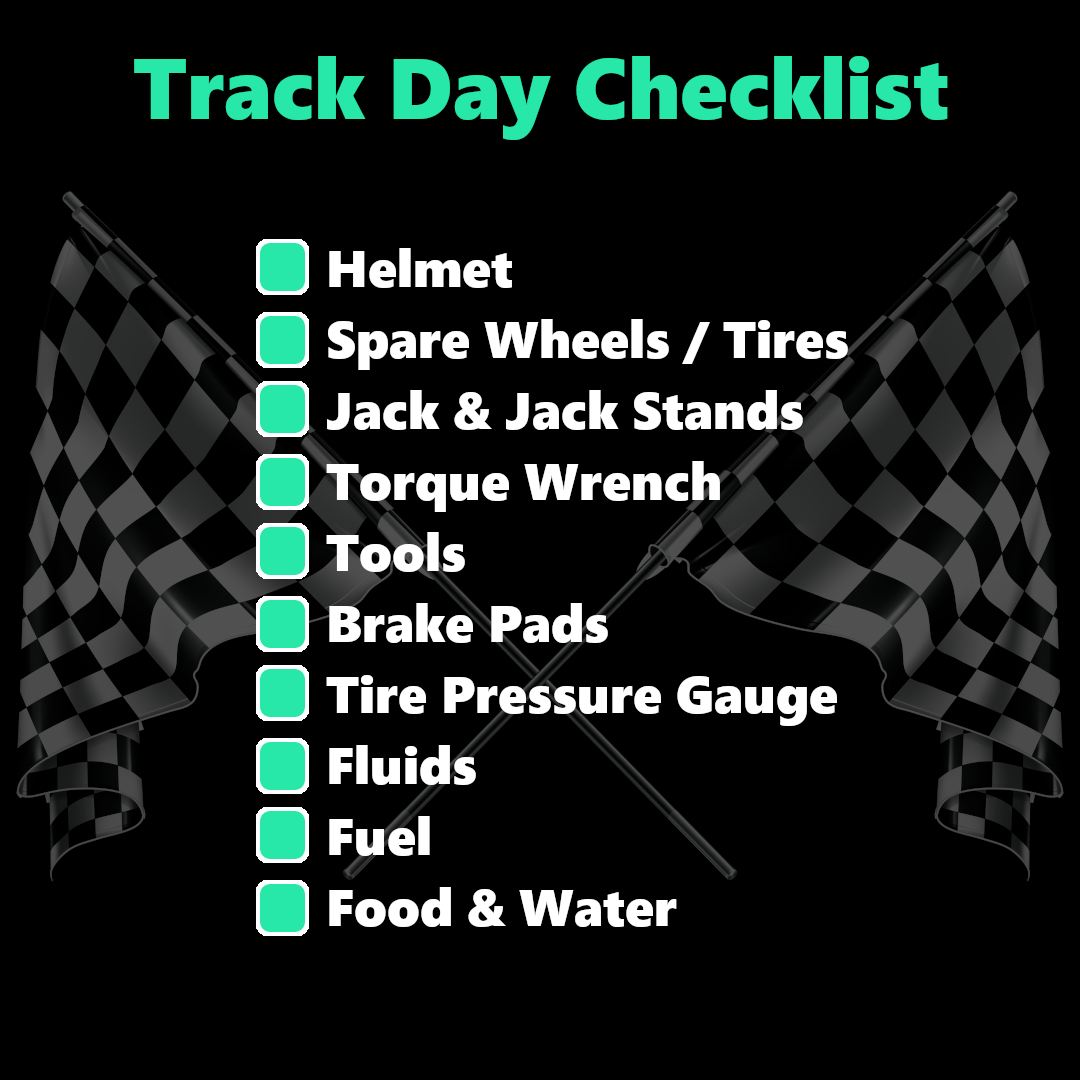
- Viet Phan and Jon Cooley
